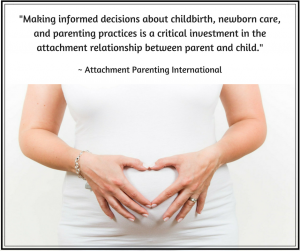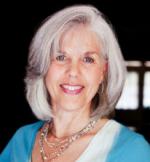About two months ago, we welcomed our second child (our first son!) into the world. With all the negative stories you hear about childbirth, I think it’s really important to tell people it’s not always like that: It doesn’t have to be a negative experience.
 I genuinely think both my birthing experiences have been really amazing.
I genuinely think both my birthing experiences have been really amazing.
After having a natural birthing experience with my daughter, I knew as soon as we found out we were expecting again that I wanted something similar. Except this time, I really wanted to avoid being in a hospital setting.
There is a stand-alone birth center within a hospital not far from us. For me and my husband, this offered us the best of both worlds. While not completely comfortable with a home birth, we wanted our son’s birth experience to be as similar to a home birth as possible. Yet — God forbid anything were to go wrong — we were just down the hall from the labor and delivery unit at the hospital.
Editor’s note: Attachment Parenting International does not take a stance on childbirth settings or health care providers, but rather encourages parents to research their options in order to make informed decisions regarding the birth of their baby. Learn more about API’s First Principle of Parenting: Prepare for Pregnancy, Birth and Parenting.
I think one of the most important aspects in planning a birth is making sure you have a provider who not only agrees to your birth plan but understands it. Instead of having to explain why keeping it as natural as possible was so important to us, we had a provider who inherently felt the same way we did. All we had to do was wait for our little man to arrive.
I had contractions irregularly for the last couple of months of my pregnancy, so we were surprised when my due date came and went. One Day 13, with no sign of labor starting on its own, my husband and I headed to the hospital for an induction. My midwife was committed to keeping the medical intervention as limited as possible and assured us that as soon as labor kicked in, we could move over to the birth center and continue as we saw fit.
At 9:00 a.m., my midwife broke my water. We fully expected this to tip my body into labor. My husband and I started doing laps around the unit to encourage contractions. We walked A LOT! Over the next seven hours, we must have lapped the unit 100 times to no avail. This little man was comfy in there and wasn’t ready to meet us yet.
By 4:00 pm, my midwife sat down to discuss what we wanted to do. Throughout the entire experience, she was extremely knowledgeable and willing to offer her opinion, but she always left the decisions up to my husband and me, never pressuring us to go one way or the other.
She told us that most women were in active labor within 48 hours of their water breaking and that I could continue waiting. Throughout my entire pregnancy and birthing experience, I felt strongly that I should trust myself and my body. I knew my body could do this, but at the same time, I felt that my labor wasn’t going to happen on its own in that time frame. I knew that if I waited, I would most likely need additional intervention anyway.
We decided to try Cervadil, a gel that is placed on your cervix to stimulate contractions. The plan was to leave it in for two hours, after which I would hopefully be in active labor, and could go over to the birth center and get in the tub. Within 15 minutes of it being put in, I went from having almost no contractions to full-blown, active labor.
The problem with this method is that because it unnaturally stimulates your contractions, there is no break in between them, and because of the need to monitor the baby, I had to be lying down in bed. Laying down, for me at least, is the worst possible position to handle a contraction. My husband, being the awesome birth coach that he is, kept me covered in cool washcloths and reminded me that I was strong enough to do this and that our son was almost here.
There is a point in every labor where you doubt yourself. With my first birth, it came in the last few hours before I was ready to push. The intensity can get the best of you, and even though I was committed to having a natural birth, I at least understood why people choose otherwise. It’s in those moments that my husband becomes my biggest hero. He never wavered in his encouragement, reminding me that I was strong enough to do this and that our child was almost in my arms.
This time around, I thought I was prepared for that moment. I knew it would come, but I also knew it signaled that my body was in the final stage of bringing this child to me. I was not expecting it to happen 45 minutes into labor. My husband again became the voice of sanity, reminding me to keep breathing and stay focused.
Truly feeling each contraction, feeling your baby move toward birth, gives me a true sense of what a life-changing experience this is.
Seeing the surprising progress that had been made in less than an hour, we decided to remove the Cervadil and prepared to move over to the birth center. My midwife ran ahead to get the tub filled as my husband and the nurse helped me get up and into the wheelchair. There would be no walking at this point.
As soon as I stepped into the warm tub, my body immediately relaxed. I felt comfortable and knew that our son would enter the world the way we wanted.
A few contractions later and our son entered the world. He let out a quick scream to mark his arrival and then snuggled in on top of me. I have heard stories about babies who don’t cry when they are born since the environment is so calm but part of me was always suspect. We are constantly associating a screaming baby with a sign of a healthy baby, so when our son wasn’t screaming, we had to remind ourselves that it was okay: He was content and knew he was exactly where he was supposed to be.
As I nuzzled our son, my husband helped me out of the tub and the three of us snuggled into bed to get to know each other. Then we introduced our daughter to her new little brother. Watching her face light up when she realized the little baby who was in Mommy’s belly was finally here was a priceless moment.
Going so far passed my due date, being induced, having a two-hour labor — these were all things that I had not planned for. However, none of them caused me to have a negative experience. We may have had to go with the flow a little more than expected, but the experience was amazing.
Instead of saying, “I love you in spite of the labor you put me through,” I can tell my son: “I love you, and I loved bringing you into this world.”









